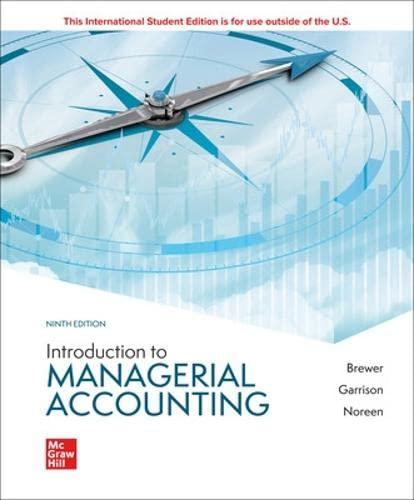PROBLEM 221 Plantwide Versus Multiple Predetermined Overhead Rates LO21, LO22 Mason Company has two manufacturing departmentsMachining and
Question:
PROBLEM 2–21 Plantwide Versus Multiple Predetermined Overhead Rates LO2–1, LO2–2 Mason Company has two manufacturing departments—Machining and Assembly. The company considers all of its manufacturing overhead costs to be fixed costs. It provided the following estimates at the beginning of the year as well as the following information with respect to Jobs A and B:
Estimated Data Machining Assembly Total
$500,000 $100,000 $600,000
. . 10,000 50,000 60,000
. . . . 50,000 5,000 55,000 Job A Machining Assembly Total
. . . . . . 5 10 15
. . . . . . . . 11 2 13 Machining Assembly Total
. . . . . . 4 5 9
. . . . . . . . 12 3 15 Required:
1. If Mason Company uses a plantwide predetermined overhead rate with direct labor-hours as the allocation base, how much manufacturing overhead cost would be applied to Job A? Job B?
2. Assume that Mason Company uses departmental predetermined overhead rates. The Machining Department is allocated based on machine-hours and the Assembly Department is allocated based on direct labor-hours.
How much manufacturing overhead cost would be applied to Job A? Job B?
3. If Mason multiplies its job costs by a markup percentage to establish selling prices, how might plantwide overhead allocation adversely affect the company’s pricing decisions?
Step by Step Answer:

Introduction To Managerial Accounting
ISBN: 9781265672003
9th International Edition
Authors: Peter C. Brewer , Ray H. Garrison, Eric Noreen





